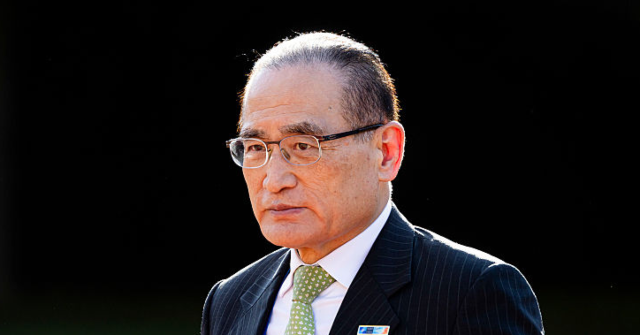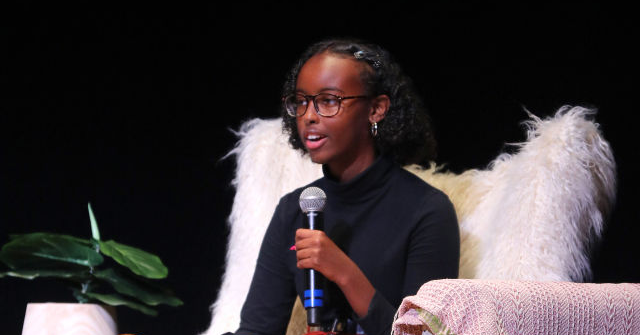 Bonhams Skinner recently opened a new Boston saleroom at 236 Clarendon Street in the city’s historic Back Bay neighborhood. Courtesy of Bonhams Skinner
Bonhams Skinner recently opened a new Boston saleroom at 236 Clarendon Street in the city’s historic Back Bay neighborhood. Courtesy of Bonhams SkinnerAfter acquiring Skinner Inc.—New England’s oldest and largest auction house—as part of its global expansion strategy in 2022, Bonhams has opened a new Bonhams Skinner location on Clarendon Street in Boston’s Back Bay. The move marks the next chapter in the London-based company’s push to grow its North American presence and strengthen its digital capabilities. “We were acquired just over three years ago, and it’s been a great marriage so far,” Robin Starr, general manager of Bonhams Skinner, told Observer ahead of the June 17 opening. “The vibe is very similar—Bonhams people are warm and welcoming, and that fits perfectly with the Skinner spirit.”
Founded in 1962 by Robert W. Skinner Jr., Skinner earned its reputation through deep expertise in Americana, fine art and collectibles. Bonhams’ acquisition has broadened that legacy, pairing Skinner’s digital reach and specialist knowledge with its international infrastructure and client base. “Bob Skinner’s first love was American furniture and decorative arts, so Americana has always been at the heart of who we are,” Starr said. “Now that we’re part of Bonhams, we’ve retained that identity and our decades-old reputation in New England, but we get to do it with the backing of a global network in New York, L.A., Paris, Hong Kong, Sydney and London.”
Boston and the wider New England region are fertile ground for high-quality consignments and significant collections, making the area essential to a global house like Bonhams. “We’re still holding about sixty live and online auctions a year through Bonhams Skinner,” Starr explained. “But if something comes in and we know it will perform better in Hong Kong or New York, that’s where it will go. We now have more options than ever to make sure we’re doing the best for our consignors.”
 Robin Starr, general manager of Bonhams Skinner. Courtesy of Bonhams Skinner
Robin Starr, general manager of Bonhams Skinner. Courtesy of Bonhams SkinnerBonhams Skinner clients across New England have already embraced this broader access the global network now provides, according to Starr.. “We’re always happy to work closely with our New England clients. If we know someone is collecting in a specific category and we don’t have anything coming up locally, we’ll let them know there’s a sale in L.A. in a few weeks. We’ll make sure they’re informed and send along images and details.”
“Some of us old Yankees are quite insular,” she added, “but others are excited to be offered things they hadn’t seen before. We’re now able to cater to both kinds of collectors, and just as importantly, we bring a kind of generational knowledge to the region.”
Starr has been with the company since 1987, and her tenure allows her and many colleagues to collaborate seamlessly with multiple generations within collecting families. But Bonhams Skinner is also intent on cultivating a new cohort of collectors, drawing on Boston’s university ecosystem, which attracts a diverse mix of international students and young professionals who excel in their fields and choose to remain in the city after graduation.
 An installation view of “Unsung Makers & the New Americana.” Courtesy of Bonhams Skinner
An installation view of “Unsung Makers & the New Americana.” Courtesy of Bonhams SkinnerThe inaugural selling exhibition in Bonhams Skinner’s new space was designed to speak to both audiences. “Unsung Makers and the New Americana” charts the evolving landscape of American art and design through works by historically under-recognized artists and makers, embracing a broader and more inclusive narrative of American cultural history. The show also invites a wider collecting base with varied price points.
Pieces by BIPOC, disabled and LGBTQIA+ artists—many overlooked in their own time—refresh the Americana category, which younger and more globally minded generations often label outdated. A pair of portraits by Joshua Johnson (c. 1763-1825), Major John Nelson Black and Agnes “Nancy” Meek Hasson Black of Charlestown, Maryland, circa 1815-1816, anchors the presentation. Estimated at $300,000-500,000, the works will appear in Bonhams Skinner’s Americana sale this August.
Elizabeth Muir, the company’s new head of Americana, has made such inclusivity a priority. “She and Steve Fletcher are two peas in a pod—both passionate about storytelling, history and craftsmanship. Elizabeth has a real talent for translating that enthusiasm to younger generations, blending traditional Americana like 18th- and 19th-century decorative arts with 20th-century and 21st-century design,” Starr said. Under her leadership, Bonhams Skinner now places modern and contemporary objects alongside historic ones to show how each can illuminate the other for younger and more multicultural collectors.
SEE ALSO: The Art Basel Awards and the Power of Peer-Led Recognition
Following a model similar to Sotheby’s in Hong Kong or Paris, Bonhams Skinner offers a broader, more eclectic mix for today’s buyers. The aim is to mirror how younger clients collect—fluidly, favoring storytelling and personal resonance over strict categories. “They’re not going to buy an encyclopedic collection of Wedgwood,” Starr quipped. “They’re going to buy one or two gorgeous pieces and hang them next to an Agnes Martin or a contemporary artist from their own generation. They want those objects to play off each other in entirely new ways.”
 The new Boston space will offer public previews, specialist-led events, including lectures, academic discussions, wine tastings and guided tours. Courtesy of Bonhams Skinner
The new Boston space will offer public previews, specialist-led events, including lectures, academic discussions, wine tastings and guided tours. Courtesy of Bonhams SkinnerMindful that many new collectors are scholars or academics, Bonhams Skinner’s Boston location will be neither a traditional auction house nor a luxury boutique. Instead, the goal is to create a cultural hub where visitors can access high-quality objects, cultural artifacts and art while deepening their knowledge across categories.
“The universities draw people to Greater Boston; it’s a highly educated city,” Starr said. “People are genuinely interested in academics, in history and in cultural history, and we want to speak directly to that curiosity. We want to continue being great storytellers—whether we’re sharing the story of an American painting or a work from China that once belonged to an American collection. It’s about exploring how these objects connect to both cultures and the dialogue between them.”
Bonhams Skinner already regularly hosts lectures and panel discussions, an effort Starr sees as central to educating the next generation of collectors. Cultivating connoisseurship, she noted, is one of the most effective ways to turn a casual visit into lasting appreciation and ultimately a purchase.
“We want to make sure our Boston space is truly accessible,” she said. “It’s right in the Back Bay with plenty of foot traffic, but we’re using it in a very different way from our previous location. This new space is designed to be vibrant and welcoming. We want people to feel comfortable walking in, whether they’re browsing highlights from upcoming sales, attending a lecture or panel, or taking part in a hands-on experience. They might even speak with a specialist to learn how to examine a piece of furniture, understand an object’s construction and better appreciate when and where it was made.”
 Rendering of Bonhams’s new headquarters in the legendary Steinway Hall at 111 West 57th Street. Bonhams
Rendering of Bonhams’s new headquarters in the legendary Steinway Hall at 111 West 57th Street. BonhamsEven with its global connections, Bonhams Skinner is deeply rooted in its local community, maintaining close collaborations with regional talent and organizations. As part of this commitment, the auction house is partnering with the newly launched Boston Public Art Triennial on a series of events tied to its opening exhibition. Among the featured works is a piece by Andy Li, one of the Triennial’s Public Art Accelerator artists, whose contemporary embroidered pendant flags are paired with 19th-century textile art, drawing connections across time, media and cultural expression already present in Boston’s past and present.
The exhibition’s theme aligns closely with the Triennial’s mission to foster inclusion and diversity by placing public art in unexpected spaces and embracing a wide range of perspectives. “In many ways, this exhibition reflects that same spirit,” Starr said. “While it highlights areas where Skinner truly excels, it’s also designed to be welcoming. We want anyone walking by who’s curious to feel comfortable stepping inside, falling in love with something, and asking questions, like, ‘Why did you hang two folk art portraits next to a Gregory Gillespie?’ That kind of juxtaposition invites dialogue, and we’re here for that conversation.”
Bonhams’ growth in the U.S. and globally
This new Boston location also marks a broader expansion of Bonhams’ presence in the U.S. The auction house is preparing to relocate its New York headquarters to the historic Steinway Hall at 111 West 57th Street on Manhattan’s so-called Billionaires’ Row. The move—expected to be completed by the end of 2025—underscores Bonhams’ long-term investment in the U.S. market. “Steinway Hall symbolizes both our respect for history and our forward-looking vision,” said Bonhams executive chairman Hans-Kristian Hoejsgaard in a statement.
 Bonhams Skinner is part of the Bonhams global network of auction houses. Bonhams Skinner
Bonhams Skinner is part of the Bonhams global network of auction houses. Bonhams SkinnerBonhams acquired other established regional auction houses with deep local roots in 2022, including Bukowskis in Stockholm and Helsinki, Cornette de Saint Cyr in Paris and Brussels, and Denmark’s leading house, Bruun Rasmussen. These acquisitions reflect Bonhams’ “worldwide local” strategy—an effort to expand its reach while preserving each brand’s regional identity, setting it apart from mega-houses like Christie’s and Sotheby’s. As a result, Bonhams now operates 14 salerooms supported by 34 offices worldwide. The approach has paid off: the company surpassed $1 billion in revenue in 2022, rising to more than $1.14 billion in 2023—the best result in its 230-year history.
Bonhams has also strengthened its position in Asia, opening a flagship space at Six Pacific Place in Hong Kong this past November. The expansion coincides with an 18 percent year-over-year increase in regional sales, reaching HK$670 million ($86 million) in 2024.












 English (US) ·
English (US) ·  French (CA) ·
French (CA) ·  French (FR) ·
French (FR) ·